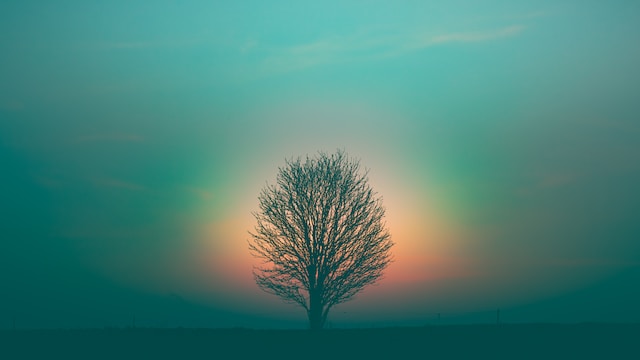At some point everyone has heard about Shamanism in one way or another and many use it as a “catch-all” term for certain spiritual healing practices, but it is so much more than that.

Shamanism is one of the most ancient practices in the world and it is said that every religious/spiritual practice has its roots in Shamanism.
Historically speaking, every tribe across the globe had a healer, a Shaman whose purpose was to maintain balance within the tribe. They are known as the “walkers between worlds”, the world of spirit and the world of humans. These individuals work through a trance/journey state to communicate with the spiritual realm to seek out spirit guides, power animals and higher levels of spiritual wisdom/healing. The purpose of this is to bring healing, insight, important information, wisdom, and spiritual guidance to the community.
In today´s society Shamanism is as important as it was thousands of years ago. More and more individuals are awakening to the other realms and dimensions that are co-existing alongside ours. There is also an increase in the demand for holistic therapies/methods by individuals to heal, not only their present traumas, but also generational/ancestral wounds and past lives trauma that still affect them to this day.

Michael Harner, the “founding father” of Neo Shamanism brought many elements of Shamanic practice under the term “Core Shamanism” to a contemporary global audience, thus having made these ancient practices accessible for everyone.
According to Harner: “A Shaman is a man or woman who enters an altered state of consciousness – at will – to contact or utilise an ordinarily hidden reality to acquire knowledge, power and to help other persons. (…) In his trance he commonly works to restore a patient by restoring beneficial or vital power, or by extracting harmful power.” The most important function of a Shaman, to this day, is to treat sickness – “dis-ease” – caused by negative spirits or energies.
The key healing modalities in Shamanism are:
- Soul retrieval
- Past lives healing & Ancestral healing
- Psychopomp
- Healing through sound and vibration/frequencies
For a soul retrieval the Shaman journeys to the spirit world to retrieve elements of an individual´s fragmented soul, thus helping to integrate a past hurt/trauma and restore balance to the individual.
Another task of the Shaman is to aid the dead and dying.
In Shamanic terms this is referred to as “Psychopomp”. This is commonly done by undertaking a journey to release spirits (who have become stuck during the process of their return to the spirit world) following death. It also involves accompanying a dying individual to the other side in a peaceful and compassionate manner.
Shamanism is way more than an exclusively South American tradition (as many like to think). As every culture in the different corners of the world had their version of a Shaman – so did the Irish.
The tradition of Irish Celtic Shamanism can be traced back to the ancient Celts and Druids.
They were the first “Irish” Shamans. According to many references in Irish mythology the tree of life “Crann Beathadh” represented their cosmology – their worldview. One of the legends states that the Giant Treochair brought the Tree of life from the Otherworld. The tree was also associated with the three worlds; the Upper world- dwelling place of the Gods, the Middle world- the place where people lived and the Lower world- the place of Mother Earth and the Nature spirits. The tree was thought to offer a means of access to these spiritual worlds. Furthermore, the Druids believed trees to be sacred, the Oak (for example) was seen as a portal to the Otherworld of Faeries and spirits.

Another characteristic of Irish Celtic Shamanism is the so called Immramma journey. The Immramma is a form of shamanic journey in the Gaelic tradition. It usually refers to a voyage by sea into the Lowerworld. This type of journey was first mentioned in the tale “The Voyage of Mael Duins Boat”, in which the hero Maelduin sets out to avenge his father´s murder. He journeyed with seventeen men in a “Currach” or skin boat to thirty three distinct Otherworld islands. On the islands they experienced numerous adventures where they encountered beautiful women, ancestors and strange spiritual beings. In present times the Immramma journey is used by the shamanic practitioner to access the otherworldly islands for specific reasons, and with a specific intention. For example:
- The Island of the Ancestors – to connect with your past loved ones.
- The Island of Souls – to gather fragmented soul pieces.
- The Island of Treasures – to receive spiritual gifts and wisdom.
The Tuatha de Danann (People of the goddess Danu) were one of the great ancient tribes of Ireland and were referred to as the Irish race of Gods whose central figure was the goddess Danu. It is said that they travelled on a huge cloud to Ireland and settled there as the first inhabitants. They were civilized and cultured people who brought many skills and crafts to Ireland such as magic and material arts. Many important members of the Tuatha de Danann such as Dagda, Brigid, Nuada, Lugh and Manannan Mac Lir (God of the Sea) can visit as spirit guides in the shamanic journeys of the ancient Celtic tradition.

Shamanism is much more than a South American tradition and its roots can be traced back to ancient civilizations across the globe. In today´s world, many people think it is just another healing modality or holistic therapy – but it is so much more than that! Ultimately the path of Shamanism is the path of direct revelation, of ancient wisdom and the power of the connection to the Divine. It is a vocation, a following and those who are walking this path – walk it with bravery, humbleness, fierceness, and the knowledge that all of us, as divine creators in this universe, are loved and protected by the Divine – every step of the way.
Main – Image by shamandrummer.tumblr.com



